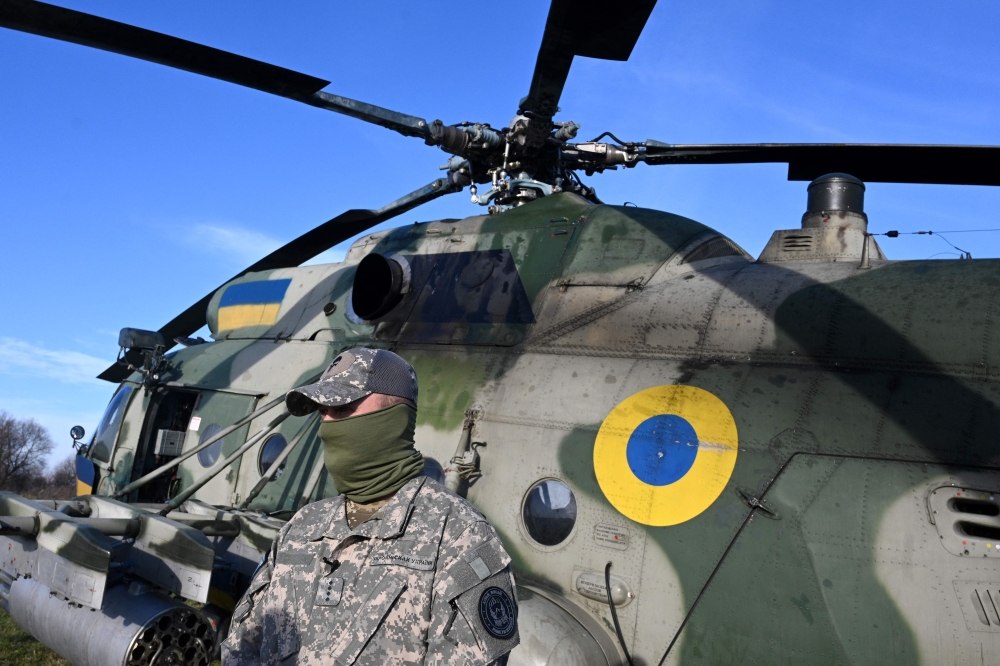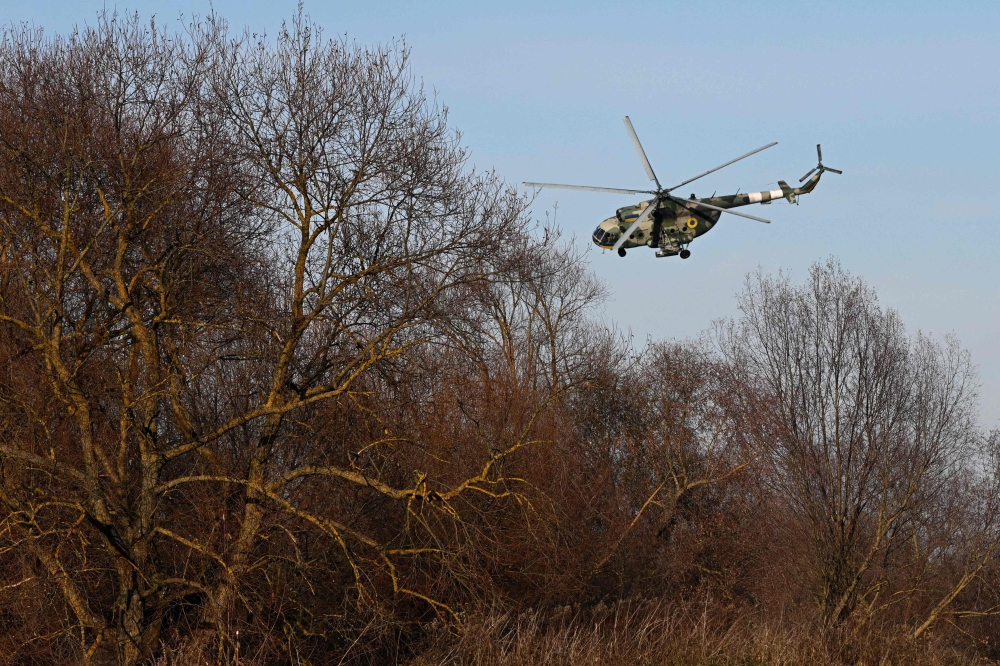KYIV, Nov 27 — At a military airfield in western Ukraine, Andriy hopped off a Soviet-era helicopter — part of an ageing fleet that his country depends on to hold back Russian forces.
His khaki Mi-8 helicopter was showing the wear and tear of age and had undergone repairs more than once, the commander in the air force said.
“They’re oldies,” the 30-year-old added, “but you still have to love them because, in any case, we have them and we need to fly them.”
Ukraine has relied on a patchwork of weapons old and new, domestic and foreign, to fend off the invasion Russia launched in February 2022.
The old choppers contrast starkly with the modern Western-supplied F-16 fighter jets that have been deployed by Ukraine to shoot down drones and missiles.
But Andriy, who declined to give his last name for security reasons, was eager to come to the defence of his old Mi-8.
“They want to do their job too! They don’t want to stand around like architectural monuments,” he told AFP.
Their main advantage is their versatility, said navigator Maksym, explaining the Mi-8s can be deployed in combat or used to transport equipment and wounded soldiers.

‘Fleet has grown’
Colonel Yevgen Solovyov told AFP that Ukraine’s need was so great that its pilots would fly any “technically capable” craft.
The air force declined to comment on the makeup and number of its helicopter fleet.
Allies have said they supplied at least two dozen Russian-origin helicopters to Ukraine, including 20 Mi-17s from the United States.
“In terms of numbers, our fleet has grown. If we are talking in terms of quality, the equipment and helicopters provided don’t meet the conditions of modern use,” Solovyov said.
Ukrainian intelligence has posted images of Black Hawks, helicopters made in the United States by a company named after aviation pioneer Igor Sikorsky, who was born in Kyiv.
But Solovyov said the regular air force had not seen the modern helicopters.
Ukraine ordered 55 Airbus helicopters from France before the invasion. It is not known how many have been delivered but some, including the H225 Super Puma, appear to be used by the Ukrainian National Guard.
The Mi-8 that touched down at the west Ukraine airfield was older than Maksym, who dreamt of being a pilot since his father took him flying as a young boy.
“I saw how beautiful it was from the helicopter window. And I thought ‘that’s what I want to be. I want to fly.’”
Helicopters have been used in daring missions throughout the war, like the resupply and rescue of soldiers from the Azovstal steel plant in the besieged city of Mariupol in 2022.
They pulled off six successful operations in Azovstal, Solovyov said, transporting around 14 tonnes of cargo and evacuating 140 wounded soldiers.

‘Fool’ of a Russian pilot
As much as navigator Maksym loved helicopters, he acknowledged their limits.
Helicopters can only strike at a relatively close range and need to be deployed in conjunction with other forces.
He said foreign aid should focus on F-16 jets or air defence systems that allow Kyiv to shoot down Russian drones and missiles.
“Unfortunately without superiority in the air, giving us helicopters, well...” he shrugged, implying the aid would be meaningless.
Maksym recounted a close call when he spotted a Russian attack drone from the cockpit flying at his same altitude.
“I was scared. A lot of thoughts flashed before my eyes. But we avoided it, executed our strike and turned back,” he said.
“Maybe the operator was a fool.”
To avoid being hit, pilots must fly low and with extreme focus.
Commander Andriy said fear was a constant but that he kept working to calm his crews.
“If you panic, they’ll be scared too. So we make a joke, we laugh, we stay focused on where we need to go, and what we need to do,” he said. — AFP






















